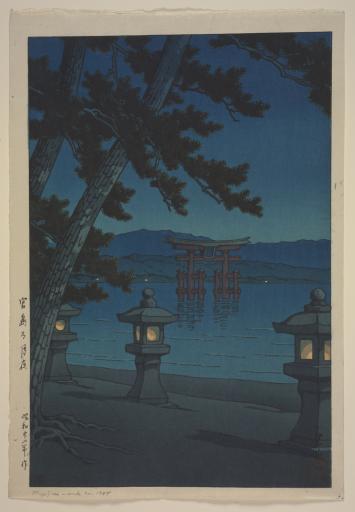Miyajima, Kawase Hasui
Artwork Overview
Kawase Hasui, artist
1883–1957
Miyajima,
1927, Showa period (1926–1989)
Where object was made: Japan
Material/technique: color woodcut
Dimensions:
Plate Mark/Block Dimensions (Height x Width): 364 x 242 mm
Plate Mark/Block Dimensions (Height x Width): 14 5/16 x 9 1/2 in
Sheet/Paper Dimensions (Height x Width): 389 x 267 mm
Sheet/Paper Dimensions (Height x Width): 15 5/16 x 10 1/2 in
Mat Dimensions (Height x Width): 20 x 16 in
Plate Mark/Block Dimensions (Height x Width): 364 x 242 mm
Plate Mark/Block Dimensions (Height x Width): 14 5/16 x 9 1/2 in
Sheet/Paper Dimensions (Height x Width): 389 x 267 mm
Sheet/Paper Dimensions (Height x Width): 15 5/16 x 10 1/2 in
Mat Dimensions (Height x Width): 20 x 16 in
Credit line: Gift of George W. Byers
Accession number: 2004.0192
Not on display
If you wish to reproduce this image, please submit an image request


